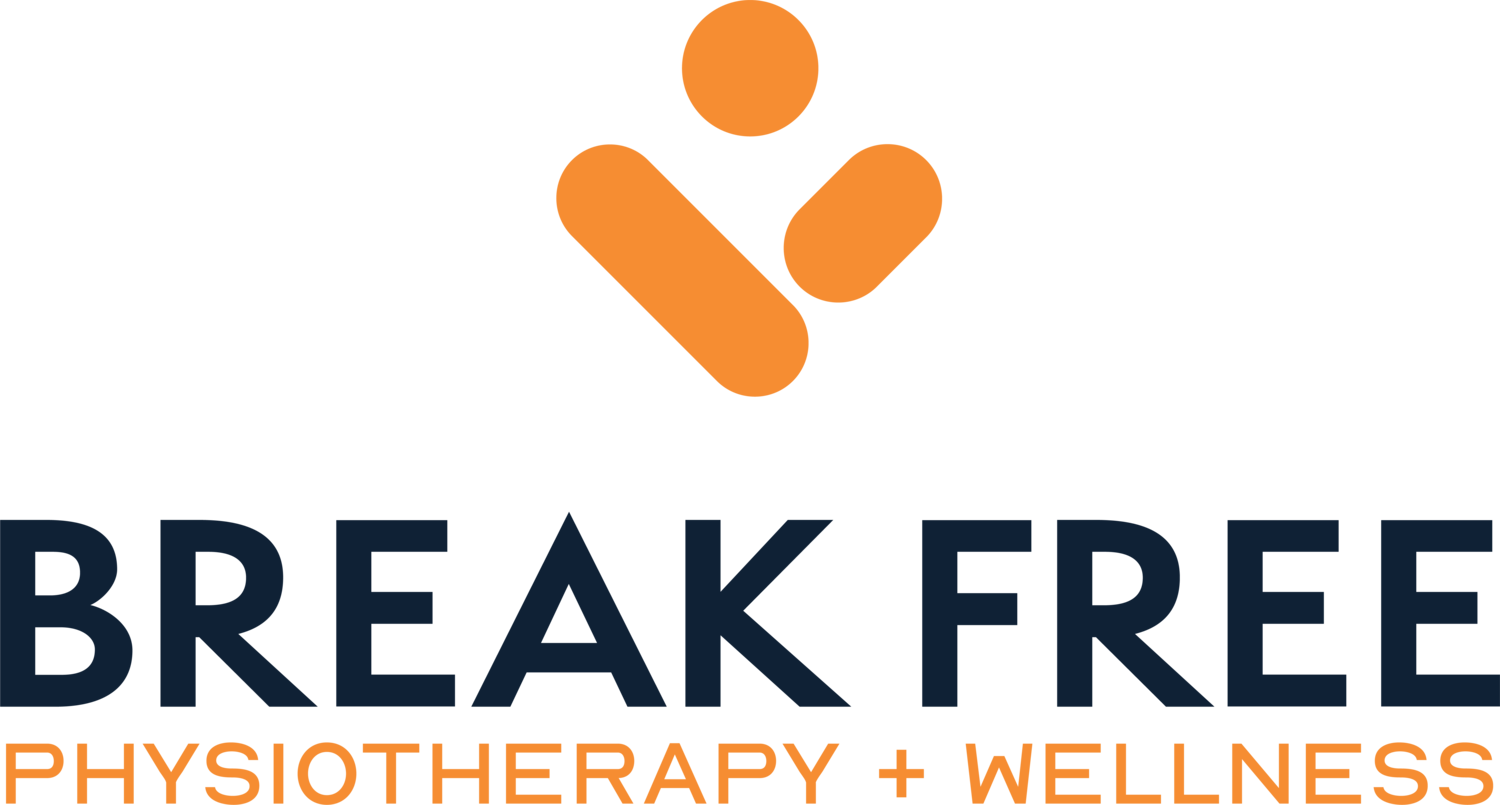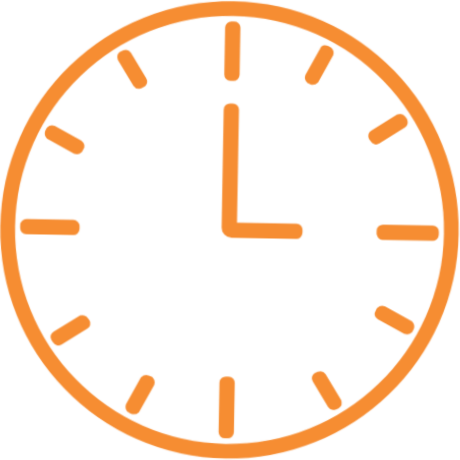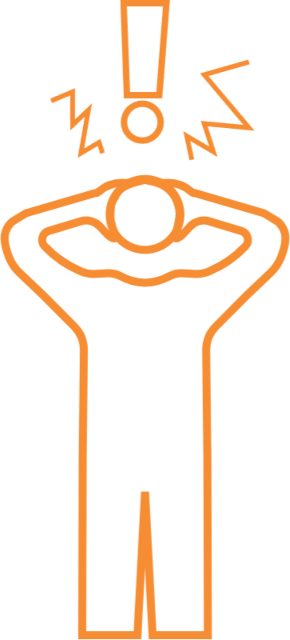Pain in the neck!
Ever wake up with a kink in your neck? What a pain! Most people have felt this sensation at some point in their life. It’s difficult to turn your head because it hurts after sleeping in a funny position. The pain lingers and might slowly get better over time, but stays stiff. You may notice checking your blind spot is difficult while driving, or it’s tough to talk with your friends in a group setting. This is a common story that people share when they walk into my office, and it can be very frustrating for them when they can’t seem to find relief.
With my years of experience, I’d like to share some insight on neck pain, signs to look for, reasons why it may occur, and some solutions that may be helpful.
First, what does it feel like?
In physiotherapy, a large part of our job is to listen to your story. This includes key information like how the injury happened, the location of pain, or what makes it worse or better. We may ask clarifying questions to determine where to focus our assessment so we can get to the bottom of your problem.
Your physical therapist will dive deeper by even asking you the quality of the symptoms you’re experiencing. Here are some common symptoms that people report, just remember that this is not an exhaustive list:
Local pain in your in your neck and along the tops of your shoulders - the quality of pain can ache, burn, or be sharp in nature
You may or may not notice tingling, burning or an ache between your shoulder blade, down your arm, and in your fingertips – all three of these don’t need to happen at the same time either
Symptoms can range from being constant to intermittent
There is stiffness that may or may not improve with movement or heat
You have the inability to turn or bend your neck in one direction or multiple directions
There is difficulty looking upwards
Symptoms will worsen with use of electronics i.e. a computer, tablet, laptop, or cell phone
Persistent or recurring headaches that have come on at the same time or after the onset of your neck pain
Lateral View of Cervical Spine
If you are experiencing symptoms like these, you may be experiencing a neck injury. It’s important to understand what could be causing the pain so it can get addressed early. Physiotherapists are trained well to understand the mechanics in the neck. Where they shine the best is in providing you with the tools to self-manage through exercise. To provide the exact exercise(s) needed, this includes a detailed history to help understand the patterns of your pain.
5 reasons for neck pain
The list of reasons for neck pain is longer than five, but I’ll share what the most common injuries we see are at Break Free Physiotherapy and Wellness. I’ve put them into categories and can give examples of things we commonly treat successfully.
1. Traumatic injuries
This could be a slip and fall, motor vehicle accident, sports injury or surgery (yes, even surgery is considered traumatic but an intentional trauma to produce a better outcome in function).
It’s common for someone to experience symptoms after a motor vehicle accident later down the road. You’ve probably heard of whiplash being the most common neck injury during a motor vehicle collision. When a vehicle collides with an object, force moves through the vehicle to the passengers causing increased stress to the spine. This results in stress to the joints, muscles, tendons, and ligaments of the neck. There are instances where people do not feel anything after the accident, but it may be masked by adrenaline from the initial shock of the event. Whether it is hours, days, weeks, or months later, some people begin to notice problems with their neck when attempting a new activity, or they experience another injury in the same area of their body.
Slips and falls are also very common in a physiotherapist’s line of work. Whether it’s an unforeseen lip on the sidewalk, or a misstep down the stairwell, when your body moves quickly, your neck muscles contract to correct the position of your head as you are falling which can result in a neck injury. Another scenario that is common is that another part of your body, such as your shoulder, back, or hand makes the first impact, but your neck is jostled in the process. This is quite common on icy surfaces. And the most obvious way of hurting your neck in a fall is your head hitting the ground first which results in the highest severity of symptoms.
Surgeries in the neck area can cause generalized weakness of the muscles around it. Depending on where your incision is, this may result in a weakening of certain muscle groups that can put additional stress on other areas of your neck and upper back. Strength testing is a physiotherapist’s bread and butter. We are movement specialists who can find weaknesses in all areas of your body. Physiotherapists at Break Free Physiotherapy know how to test for very specific muscles in the neck, so we can provide you with the right exercise for pain relief.
2. Age related changes in the neck
A buzz word that is used a lot is arthritis, osteoarthritis, degeneration, or degenerative disc disease. If you were diagnosed with these words, how would it make you feel? Scared? Anxious? Afraid to move?
These are common emotions that my clients face when they have been labeled with this diagnosis. It usually starts with a visit to the doctor and an x-ray ordered resulting in these words coming up on the report. After reading the report, clients will usually Google their condition and do their own research. They will also hear stories from friends and relatives that share their experiences of having to get surgery for their knee or hip because the arthritis was irreversible. This will often produce a sense of fear and anxiety around their condition, especially after reading their report or being told they have arthritis.
I am here to tell you that your fears and anxieties around surgery are valid. If possible, it is best to avoid surgery because of the risk of infection and other complications. However, I want to reassure you that a diagnosis of arthritis does not automatically mean surgery. The label of arthritis or degenerative are not who you are or represent how you are moving. It is just a way for radiologists to categorize what they are seeing on a static image. Imaging can be helpful to shed light on injuries that do not seem to improve over time with conservative management. If required, your family doctor can refer you to a specialist who may be better equipped to treat your condition. However, in most cases, physiotherapy and movement can provide relief for these degenerative changes seen on imaging. In many cases, the words degenerative or arthritic are just describing normal age-related changes. This is similar to wrinkles on your skin as you age. Trying physiotherapy first may save you the extra trip to the physician/specialists as the scientific body of literature states that physical activity and movement are the best ways to provide relief from and prevention of normal age-related changes.
3. Postural strain or repetitive use
Posture, posture, posture! Can you hear your parents telling you to sit up straight? This cause is usually found at desk jobs where you’re sitting at a computer for most of the day. Repetitive movements can also create strain on your neck because you’re in the same position constantly during your work shift. This would be common in factory line workers, auto mechanics, dental assistants, dental hygienists and dentists.
The best thing to do in these situations is to take a break from the position that seems to be aggravating your neck. For office workers this can be as easy as a stretch break or a posture roll. Posture rolls are great, but be cautious in purchasing one without understanding if it’s appropriate for you. Depending on how your body responds to being upright, it could either make your neck worse or better. In most cases, better, because sitting puts us in a slumped position, putting certain neck muscles under stress.
In repetitive use jobs, sometimes it isn’t realistic to take a break from the task to allow your neck to heal. In many cases, taking a vacation or modifying tasks is not possible. Our physiotherapists help provide specific stretches that can be done during your work day so that you’ll be able to rest the injured part of your body. We also use fun tools, like tape, to help you become more aware of the position your shoulders and upper back need to be in to take pressure off your neck. In some cases, we may even use modalities, such as acupuncture and dry needling, to give you relief. All in all, exercise is paramount – this means that physiotherapists strengthen muscles in the back of your shoulders, upper back and neck to help you utilize all muscle groups, thus preventing overuse of muscles that are connected to your neck.
4. Psychological reasons such as stress, anxiety or other mental health related concerns
Stress can cause our neck to tighten up and lead to strain on muscles around the area. Clenching, breathing using your neck, or prolonged periods of stress without rest can often lead to increased neck and head tension. This often leads to neck pain with or without headaches when work becomes a lot busier. I am a big advocate for mental health support, and a trusted psychotherapist can help you navigate your anxiety and stress. Physiotherapists have some training in deep breathing and can provide some resources. My favourite is meditation apps that are free on the App store. The one I personally use is Insight Timer. Acupuncture is also a great tool to help regulate your stress levels. Your physiotherapist is trained to treat symptoms related to your neck, but a lot of the acupuncture points that treat neck pain also reduce stress and anxiety. If you’re interested in booking acupuncture, check our booking page to see which physiotherapist can help you today.
5. More serious conditions
There are a variety of things you can Google that could make you very anxious about this. My recommendation is to not hit that search bar and actually see a professional who is well trained in finding out if it is a more serious condition. We could go through the list of possible conditions, but sometimes it is best for the physiotherapist to do a detailed history. There are also special tests that can help figure out if it is something needing medical imaging or a referral to the specialist. Don’t worry, we are on your side! We want to make sure you find the help you need, even if it’s a referral to someone else.
What can I do to relieve pain in my neck?
Great question, it all depends on what movements make your neck feel better.
The first step would be to avoid the positions that make it worse and to note which activities make it worse. I know it sounds very simple, but understanding what is making it worse and avoiding it can make a load of difference by decreasing your pain levels. Being in pain can sometimes make everything more confusing and frustrating.
If there is a position that feels better, spend more time in it. Also very simple, but in the first couple of weeks, by finding restful positions that decrease pain, it can reduce the strain on the structure in your neck that is irritated. Noting what positions feel better can also help your physiotherapist when meeting with them.
A common question is heat, ice, or both? I always say do what feels best. There is some research stating that using ice after an injury can actually stifle the healing process, but in cases where you are hurting and need relief, go with what feels best. I would be cautious about just relying on things that relieve pain, as it will only mask the symptoms and not provide the solution.
The above is a great start, and likely you’ve tried some of these already if you are currently in pain. I know that a lot of pages will provide “The Top 3 Exercises for Neck Pain”, but I find that can sometimes be irresponsible as it would work for some injuries and be terrible for others. However, there is no shame towards the people who write these guides or post videos on them. They have probably helped a lot of people and they may help you too. In contrast, at Break Free Physiotherapy and Wellness we are all about giving only what is appropriate for you. That means the movements provided are best suited for your injury, and provided with a rationale.
If you’re interested in seeing us to understand more about your injury, check out our website and read about our physiotherapists. If you have symptoms running down your arm and need more information on centralization or peripheralization, we have more information here.
We want to help you understand your injury so you are empowered to take control over your own health to find relief. Click here to book an assessment with one of our physiotherapists.








